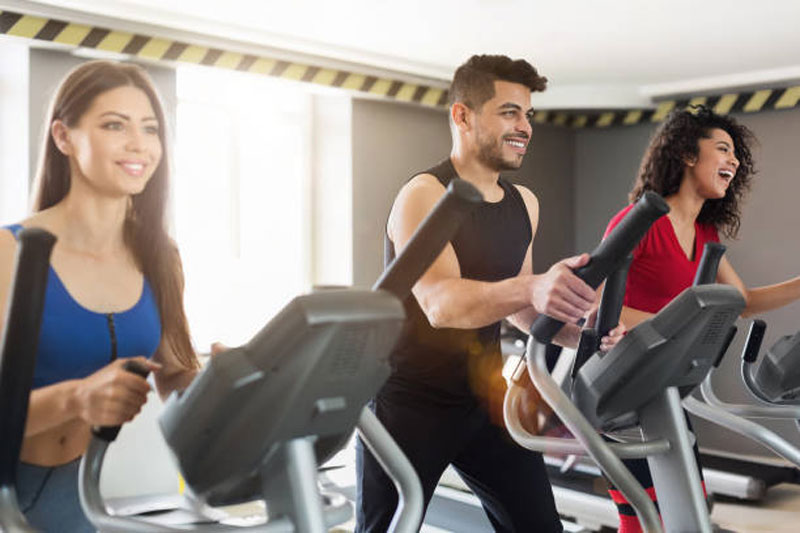
Let’s go.
First: Have a Plan of Action
“If you don’t know where you’re going, any road will take you there.” One of the biggest mistakes most fitness enthusiasts make with their training is the lack of direction. They go in, do a workout they feel like doing, and go home. A few days later, they go back and repeat the same thing. Granted, doing something is better than nothing at all, but if you genuinely want to make progress, you need to set a direction for your efforts. The first vital step you need to take is to get clear on your goals and outline an actionable plan for reaching them. For example, if you set a goal of losing ten pounds in the next eight weeks, your decision-making process will become much more straightforward – all you would need to ask yourself is this:
“Is my current plan bringing me closer to my goal?”
Plus, having a specific plan for your workouts will help keep you accountable and motivated in the long-run. Knowing precisely what you have to do once you get to the gym can serve as a huge motivator. On the other hand, if you go about it haphazardly, you can easily find yourself asking, “What harm can it do to miss a workout? I don’t even know what I want to do once I get there.”
Make Sure That You’re Progressing Over Time
The human body is an incredible survival machine capable of adapting to all sorts of environments and external stressors. At its core, training is a stressor to the body. Once you’ve finished a workout and given yourself time to recover, you grow stronger and more endurant so you can better handle that same level of stress the next time around.
This is the basis of progress – forcing your body to adapt to physical stress. But, if you keep doing the same thing over and over again, your body will eventually become fully adapted and won’t see a reason to keep improving. This is why you need to ensure that you’re challenging yourself on an ongoing basis.
So, the most practical advice would be to add a bit of work every workout, or, if that seems impossible, every week. For example, if you’re doing 30-minute elliptical sessions now, do 32- to 33-minute sessions next week. Little progress adds up to vast improvements over time. For reference, if you keep adding a couple of minutes every week, you will add 26 minutes to each session in less than six months, almost doubling your current training volume.
Five Tips For Effective Elliptical Training
As with most types of fitness activities, doing it correctly is vital for health, injury prevention, and good progress. Here’s what you should know:
1. Maintain Proper Posture
Most folks tend to slouch forward when they get tired. And exercise equipment like the elliptical trainer makes it incredibly easy to do so because you can comfortably rest your arms on the handles or at the base near the monitor and leave your legs to do all the work. To ensure whole-body recruitment, you must maintain proper posture by bringing your chest out and shoulders back. Also, keep your arms, shoulders, and chest engaged in the movement for the entire workout.
2. Use The Handles
This ties in with the first tip of actively recruiting your upper body. For the most effective workout (and to ensure that you’re making the most of your time on the elliptical), actively push and pull the handles as you go through each revolution. When done correctly, the movement pattern should resemble that of jogging in the park. The difference being, the elliptical offers a consistent level of resistance for your upper body which helps develop it.
3. Keep Your Feet Flat on the Pedals
Keeping your feet flat on the pedals ensures proper alignment of your entire body. If you stand on your toes, you are more likely to lean too far forward, which only puts unnecessary stress on your body and fatigues you quicker. To prevent this from happening, engage your core and glutes, step firmly on the pedals, maintain proper posture, and maintain a slight bend at your knees.
4. Start Slow And Vary The Intensity
Most people use the elliptical for low-intensity cardio exclusively. And not that there is anything wrong with that, but varying the intensity from time to time is a great way to spice up your training, keep things interesting, and challenge yourself in new ways. For example, low-intensity cardio is a great way to become more endurant, burn a lot of calories, and improve your cardiovascular health. But, high-intensity short bursts of exercise are a great way to build strength and explosiveness while also burning a lot of calories in a time-effective manner.
5. Try Different Incline Levels
As a general rule, the higher the incline level is, the more you emphasize your glutes. It’s a good idea to vary the incline levels every so often (for example, every workout or to try several levels within each session). That will ensure a more balanced development of your lower body. Plus, since we are all built slightly differently, some incline levels might be better suited for you than others, but you can only find that out through some experimentation. For best results, you should vary the incline levels slightly and remember at what percentage it feels the most natural for your body.
Comments
comments